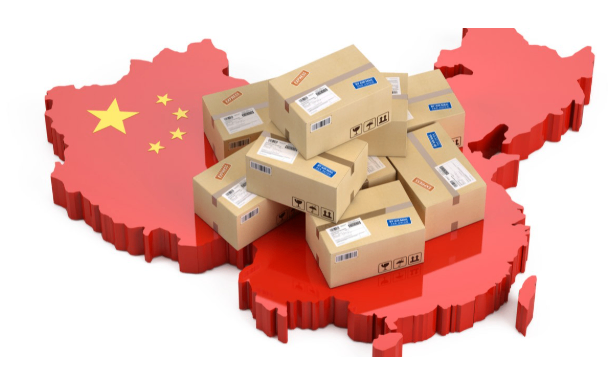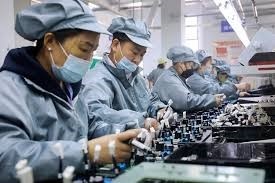



 ${ lang === 'zh' ? '中文': 'ENG' }
${ lang === 'zh' ? '中文': 'ENG' }




 ${ lang === 'zh' ? '中文': 'ENG' }
${ lang === 'zh' ? '中文': 'ENG' }
 ${formatTime('2025-02-26 14:44:41', 2)} ${formatTime('2025-02-26 14:44:41', 3)}, ${formatTime('2025-02-26 14:44:41', 1)}
${formatTime('2025-02-26 14:44:41', 2)} ${formatTime('2025-02-26 14:44:41', 3)}, ${formatTime('2025-02-26 14:44:41', 1)}

Key Insights to Start Sourcing from China

1. Quality, Price, and Speed: Trade-offs You Can’t Ignore
It’s essential to understand that you cannot simultaneously expect low cost, high quality, and fast turnaround times. If a supplier promises all three, be cautious—they may be cutting corners to make their offer seem irresistible.
2. First Orders Take Longer Than Expected
The first order is often the longest. You’ll need time for product design, sample approvals, and final production. Always expect delays—triple the quoted lead time to get a more realistic idea of what to expect.
3. Incorporating Hidden Costs
Remember to account for the hidden costs in sourcing from China, such as shipping samples, customs inspections, and possible returns. These can add up and erode your profit margins if you don't factor them into your budget.
4. Order Size Matters for Better Deals
The key to getting the best pricing and quality is placing larger, repeat orders. Chinese suppliers usually work on thin margins and are more likely to offer discounts or favorable terms to long-term, reliable buyers.

Sourcing Models: Choosing the Right Approach
1. Direct Factory Sourcing
Buying directly from a Chinese factory is a common approach. This model works best for simple, low-customization products.
Advantages:
• Lower prices
• Direct control over production
Disadvantages:
• Language barriers
• Limited marketing and outreach capabilities from the factory
2. Using Trading Companies
Trading companies act as intermediaries between manufacturers and international buyers. They often source products from multiple factories and resell them, with an added markup.
Advantages:
• Easier communication compared to direct factory sourcing
• Larger product range and lower minimum order quantities
Disadvantages:
• Higher prices due to markups
• Less control over product customization and quality
• Possible conflicts of interest with the factories
3. Sourcing Companies
Sourcing companies take a more hands-on approach, managing the entire process from product development to quality control.
Advantages:
• Better pricing and supplier networks
• Stronger focus on quality and compliance
• Dedicated client representation in China
Disadvantages:
• Higher service fees
• You must know exactly what you want to source, as they do not offer product recommendations

How to Find and Qualify Suppliers in China
1. Steps to Identifying Reliable Suppliers
Begin by identifying suppliers through online platforms, trade shows, and social media. Once you have a list of potential suppliers, proceed with due diligence to verify their legitimacy.
Supplier Checklist:
• Location: Is the supplier situated in an industrial hub?
• Capacity: Can they meet your order volume?
• Quality standards: Do they meet international or industry-specific quality standards?
• Price: Does the supplier offer competitive pricing for your target market?
2. Conducting Due Diligence
Ensure that you verify the supplier's credentials thoroughly. Some essential steps include:
• Requesting their business license and registration details
• Visiting their factory or hiring a third-party inspection service
• Checking for any legal disputes or debts involving the supplier
3. Setting Clear Expectations
Before moving forward, define your supplier expectations in terms of quality, delivery timelines, and cost. Only contact suppliers who meet these criteria to avoid unnecessary complications.

Communication, Negotiation, and Contractual Considerations
1. Communication Is Key
Effective communication is vital. It's strongly recommended to have a Mandarin-speaking team member, especially for crucial stages like setting quality expectations and finalizing agreements.
2. Negotiating Terms with Chinese Suppliers
When entering negotiations, focus on these key areas:
• Lead times and shipment schedules
• Incoterms (International Commercial Terms)
• Intellectual property (IP) protection, especially for unique products
• Product quality standards and certifications
• Payment terms and delivery schedules
• Dispute resolution procedures
3. The Importance of Written Contracts
To protect your business, ensure you have a detailed contract, preferably bilingual or in Chinese. This should include:
• Clear definitions of product quality and timely delivery
• Payment terms and conditions
• Liability clauses in case of breach
• Jurisdiction and dispute resolution mechanisms (ideally in China)

Managing Quality Control and Production
1. Setting Quality Standards
The most effective way to manage quality control is to have clear specifications in your contract. Ensure these standards are followed at every stage of production.
Proactive Quality Control Tips:
• Pre-production samples: Always request samples before the full production run.
• Post-production inspection: Arrange for a third-party inspection agency to assess the goods.
• Photos and videos: Request visual evidence of production progress.
2. Third-Party Inspections
For larger or more critical orders, third-party quality inspections are highly recommended. These services typically cost around $300 and can help you identify issues early, reducing the risk of receiving subpar products.
3. Protecting Yourself from Payment and Quality Issues
To protect your interests, consider:
• Using safer payment methods like escrow services or bank lines of credit
• Requesting smaller initial orders to test product quality before committing to larger purchases
• Diversifying suppliers to avoid dependency on a single source

Shipping and Logistics
1. Shipping Methods
Understanding your shipping options will ensure you select the best method based on cost, time, and product volume.
Sea Freight (Ocean Shipping)
• Best for large, low-cost orders but may take several months.
• Full Container Load (FCL) or Less than Container Load (LCL) depending on order size.
Air Freight
• Ideal for time-sensitive, larger orders (around 1,000 kg). It’s faster but more expensive.
Air Courier
• Best for small, high-value orders or urgent shipments, with companies like UPS or DHL handling everything.
2. Managing Customs and Import Fees
Work with a forwarder or sourcing company to manage paperwork and handle customs duties. This ensures a smooth process and avoids unexpected costs.

Protecting Your Intellectual Property (IP)
1. Non-Disclosure, Non-Compete, Non-Circumvention (NNN) Agreements
An NNN agreement is crucial to protect your designs and prevent manufacturers from circumventing you. Ensure it is enforceable under Chinese law to prevent any issues down the line.
2. Trademark Protection
Register your trademark in China as soon as possible to avoid the risk of someone else registering it first. You should also secure trademarks in the markets where you’ll sell your products.
3. Patent Protection
If your product is innovative, it’s wise to secure a patent in China to prevent others from copying it. Consider filing for invention, utility model, or design patents.
Handling Disputes and Legal Challenges
1. Dispute Resolution in China
Dispute resolution has improved in China, but you still need to be prepared for potential challenges. Ensure you have a well-documented contract, clear payment proof, and knowledge of the supplier’s assets.
2. Steps to Resolve a Dispute
• Negotiation: Try to resolve issues directly with the supplier.
• Third-party assistance: If direct negotiations fail, enlist the help of Chinese legal counsel.
• Litigation/Arbitration: As a last resort, take legal action in Chinese courts or arbitration.
By following these strategies and taking the necessary precautions, you can source from China effectively while minimizing risks and maximizing the benefits for your business.
New Zealand Trade & Enterprise. (2024, May 17). A guide to sourcing from China.
Link: https://my.nzte.govt.nz/article/a-guide-to-sourcing-from-china